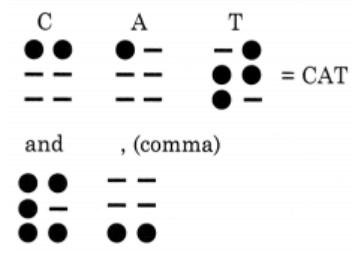Class 8 Science Chapter 13 HOTS Questions - Light
Q1: What is power of accommodation?
Ans: The process by which the ciliary muscles change the focal length of an eye lens to focus distant or near objects clearly on the retina is called power of accommodation.
Q2: How does large cornea and a large pupil in the eyes of the nocturnal birds help them?
Ans: Large cornea and a large pupil allow more light to enter their eyes and they can see objects even in faint light.
Q3: What kind of lens is there in our eyes? Where does it form the image of an object?
Ans: Convex lens is there in our eyes. It forms image of an object on the retina.
Q4: While playing, something entered into Somya’s eye. She immediately washed her eye with cold water. But as the irritation persisted, she immediately reported to her class teacher. Her class teacher took her to an eye doctor.
- What should be done if some foreign particles enter your eyes?
- Why is it not advised to rub your eyes when there is an eye irritation due to foreign particles?
- Do you think Somya was right in her action?
- What value of Somya is seen here?
Ans:
- We must do the following things:
- Restrict eye movement
- Shut the eyelid
- Do not rub eyes
- Try to clean it with splash of clear water
- Contact eye doctor immediately.
- Foreign object may cause abrasions or scratches on our cornea or rubbing. It may also cause bleeding of cornea.
- Yes.
- She is intelligent, knowledgeable and aware of such kind of small accidents.
Q5: Write a short note on Braille system.
Ans: The most popular resource for visually challenged persons is Braille. Braille system was developed by Louis Braille. He himself was a visually challenged person. There is Braille code for common languages, mathematics and scientific notation. Many Indian languages can be read using the Braille system. Braille system has 63 dot patterns or characters. Each character represents a letter, a combination of letters, a common word or a grammatical sign. Dots are arranged in cells of two vertical rows of three dots each. Patterns of dots to represent some English letters and some common words are shown in Fig.
These patterns when embossed on Braille sheets help visually challenged persons to recognise words by touching. To make them easier to touch, the dots are raised slightly. Visually challenged people learn the Braille system by beginning with letters, then special characters and letter combinations. Methods depend upon recognition by touching. Each character has to be memorised. Braille texts can be produced by hand or by machine. Typewriter-like devices and printing machines have now been developed.
Q6: Explain the phenomenon of dispersion of light.
Ans: Dispersion is defined as the phenomenon of splitting of white light into different colours on passing through a transparent medium such as prism. When white light is passed through a prism, it splits into seven colours. It is observed that the colours are in the following order: Violet (V), Indigo (I), Blue (B), Green (G), Yellow (Y), Orange (O) and Red (R). The order of colours can be remembered by the acronym VIBGYOR. This coloured band is called spectrum of white light.
Q7: Write the ways to protect your eyes.
Ans: Eyes are very delicate organ that enable us to see this colourful world. Thus, we must protect our eyes and take proper care of them. Following are the ways to protect the eye:
- Always sit straight while reading or writing.
- Never read while walking or lying down.
- Wash your eyes frequently with clean water.
- Never read in the dim or too much bright light.
- Never rub your eyes with hands.
- Never bring the book too close to your eyes.
- Eat foods rich in vitamin A.
Q8: Explain some common eye defects in human.
Ans: Some eye diseases are:
- Cataract: A cataract is a clouding of the lens in the eye leading to a decrease in vision. It can affect one or both eyes. Often it develops slowly. Symptoms may include faded colours, blurry vision, halos around light, trouble with bright lights, and trouble seeing at night. This may result in trouble driving, reading, or recognising faces. Cataracts are the cause of half of blindness and 33% of visual impairment worldwide. Cataract is treated by replacing the opaque lens with a new artificial lens.
- Myopia: Near-sightedness or myopia, is the most common refractive error of the eye. Myopia occurs when the eyeball is too long, relative to the focusing power of the cornea and lens of the eye. This causes light rays to focus at a point in front of the retina, rather than directly on its surface. It can be corrected using spectacles made of concave lens.
- Hypermetropia: Hypermetropia or long-sightedness occurs when eyeball is too short or the cornea or crystalline lens does not refract the light enough. This lead to formation of the image of a nearby object behind the retina. A hypermetropic person may have blurred vision when looking at objects close to them, and clearer vision when looking at objects in the distance. By placing a convex (plus powered) lens in front of a hypermetropic eye, the image is moved forward and focuses correctly on the retina.
- Astigmatism: It is a defect in the eye or in a lens caused by a deviation from spherical curvature, which results in distorted images, as light rays are prevented from meeting at a common focus. It can be corrected by using a convex lens or concave lens or both.
|
92 videos|296 docs|44 tests
|
















